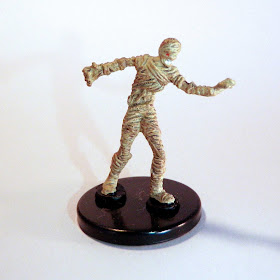Rookie Dungeon Masters often make the mistake of running a module and doing lots of things they should not be doing.
#1. Mod the Module!
It is meant to be modified. What you are given may not suit your setting, the atmosphere of your game, or even your group of players. You may need to add more action, add some sub-plots to make it more interesting, or even rewrite whole sections of the module to bring it up to snuff.
While you might think that modules are meant to be played as is, with zero changes, even the people who wrote the module are probably frequently changing it to suit their needs.
For some groups the DM might have to give them extra reasons (more gold, the lure of a mysterious magical item, etc) because maybe the party really doesn't want to go to Tornado Island...
#2. Read and Reread the Module.
You should be well prepared and know everything in the module - NPC names, the overall plot, etc - and be well-versed in any special circumstances that show up in the module. This way you don't run into any surprises along the way that throw a wrench into your game.
#3. Familiarize yourself with all Monsters mentioned in the Module.
So for example if there is a mummy in the module you should read the Monster Manual and see if it fits your adventurers. Maybe a mummy lord would be more challenging? Or a mummy with a special ability.
You might even decide to change some of the monsters being used, perhaps using a Shadow instead of a Mummy, mostly because you have a Shadow miniature and don't have a Mummy miniature.
#4. Make a Larger Version Map.
Mostly I find this very handy. I find that players get a better sense of what is happening if they also know WHERE they are. The little maps that come with modules are often 8 by 12 inches and might suit the DM's needs, but unless you are photocopying it then it doesn't really suit the needs of players.
Plus bigger maps can also be drawn on, things added to, and the party can do this cooperatively - so it becomes a group map. For added flair you can also "age the map" by staining it a little bit with watered down tea.
#5. Create Side Quests specifically for the Module.
This essentially is to give the PCs something else to do. They can explore a side dungeon that wasn't included in the original module, a cave that they found in the woods, side plots involving minor NPCs, etc. You can also create sequels and little plots to get rid of any plot holes, tie up loose ends, etc.
If wracking your brain for ideas for side plots, check out old Dungeon Magazines. Some of them had little "Side Trek" adventures in them that are basically one or two pages that you can just slot in to your module for added interest.
BONUS
Get rid of any potential for campaign ruining powerful items. A magical sword that is too powerful. An artifact that grants unlimited wishes. Such things should be destroyed, stolen, cursed, etc.
For example, if the party somehow gained ownership of a flying fortress by the end of the module, that fortress should be crashed into the side of a mountain almost immediately.




No comments:
Post a Comment
Comments containing links will be marked as spam and not approved.